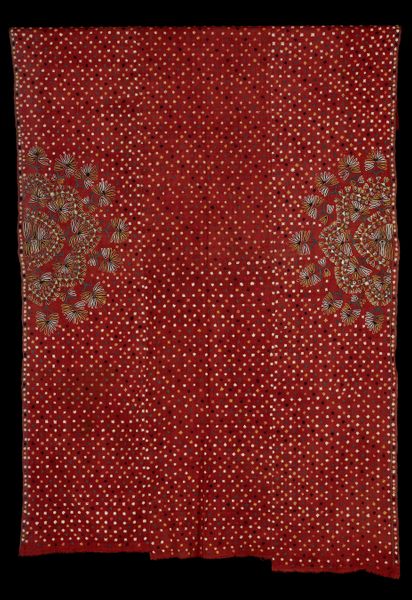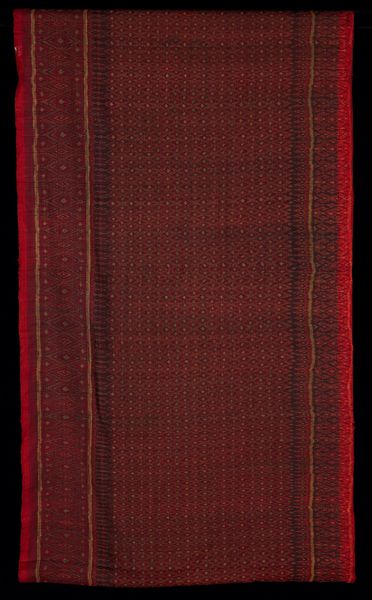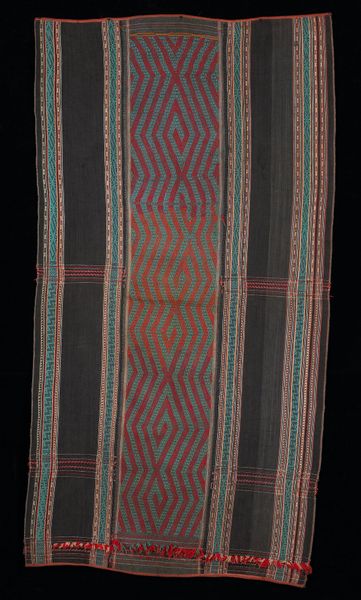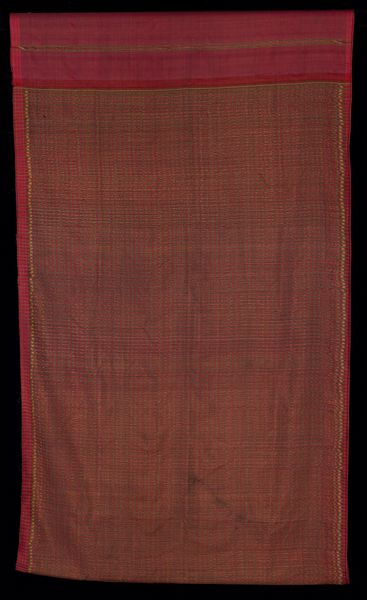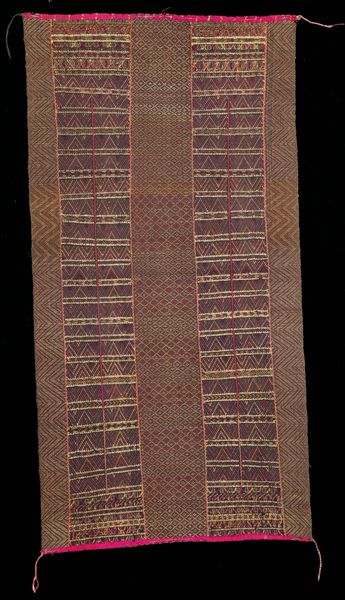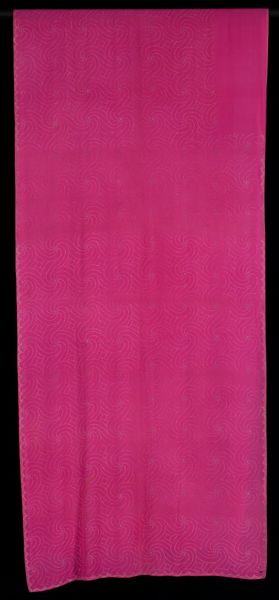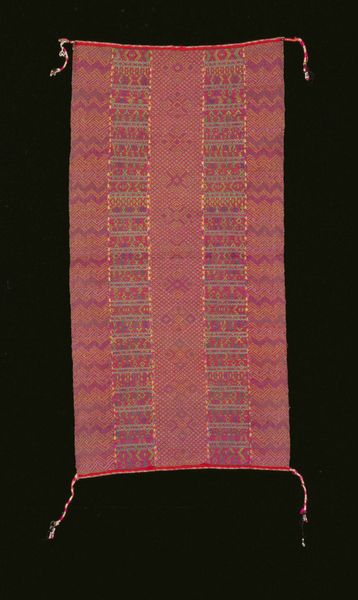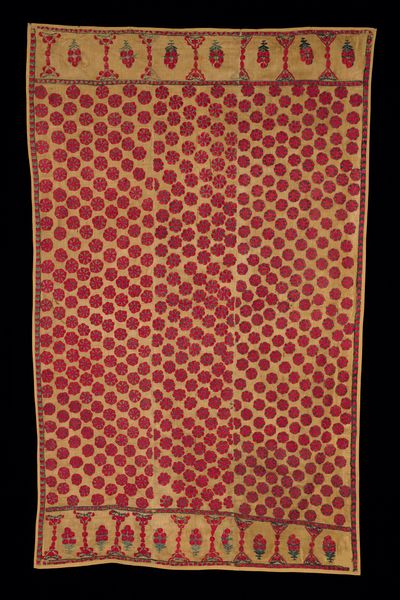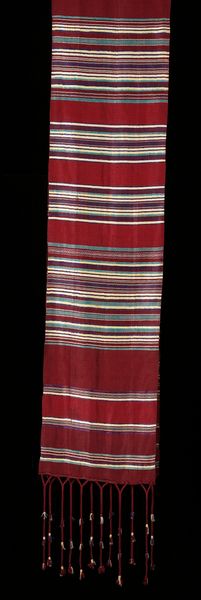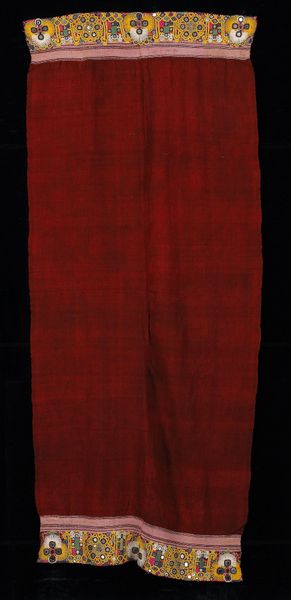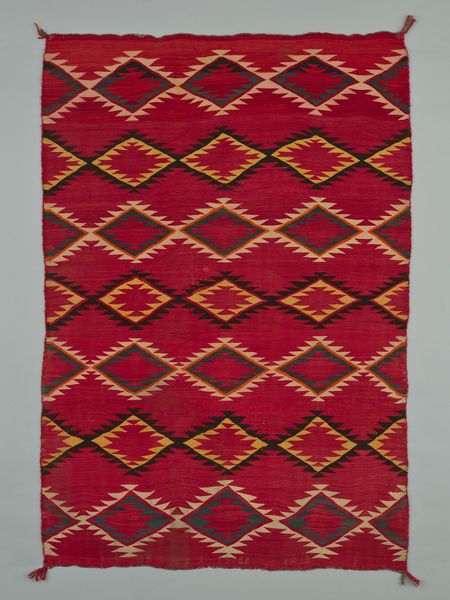
fibre-art, weaving, textile, cotton
#
natural stone pattern
#
fibre-art
#
pattern
#
weaving
#
textile
#
geometric pattern
#
abstract pattern
#
minimal pattern
#
organic pattern
#
geometric
#
repetition of pattern
#
regular pattern
#
pattern repetition
#
cotton
#
imprinted textile
#
layered pattern
Dimensions: 75 7/8 x 17 1/4 in. (192.72 x 43.82 cm) (without fringe)
Copyright: Public Domain
Curator: This shoulder cloth, likely woven in the 20th century by the Chin people of the Khami region, offers a fascinating interplay of textures and hues, don't you think? Editor: The boldness of the crimson is striking, it feels like the cloth practically vibrates with color. The weaving looks quite intricate too, can you tell me about the materiality of it? Curator: Indeed. The primary material appears to be cotton. But more significantly, it is the structure of the weaving itself that communicates deeper symbolic languages, in that tight geometry you see ancient systems of thought embedded within it. The careful pattern speaks of cultural values being literally woven into the fabric of daily life. Editor: So the creation of this cotton shoulder cloth acts as a vessel then? I suppose someone had to source the fibers, perhaps even spin them before engaging the loom. Are the dyes from natural sources too? That intense shade suggests deliberate work in building and processing the elements. Curator: Almost certainly plant based, it is the deep red that connotes valor and status, a visual declaration of one's role within the social hierarchy. This isn’t mere decoration; it’s a layered form of communication. Each careful repetition, each subtle shift in pattern echoes ancestral narratives. Editor: The layering in particular interests me: we have this strong lateral symmetry from top to bottom in shades that move across the plane, the red almost pinning this textile open to allow that pale field in the center to breathe and expand. Curator: Precisely! See, within those variations lie the clues to interpret larger ideas. These textiles transcend utilitarian objects. They encapsulate spiritual values, historical memory, and social identities all in a tangible, wearable form. Editor: It's like each thread carries its own weight of history. You really see the intermingling of labor and meaning there, as it presents questions about skill, utility, status and identity formation. Curator: Yes! I hadn’t thought about it like that, but you have a very good point. It enriches how I read this cloth now, even with all of its embedded layers and cultural nuance. Editor: Ultimately, a textile like this prompts so much thinking about use and art.
Comments
No comments
Be the first to comment and join the conversation on the ultimate creative platform.
